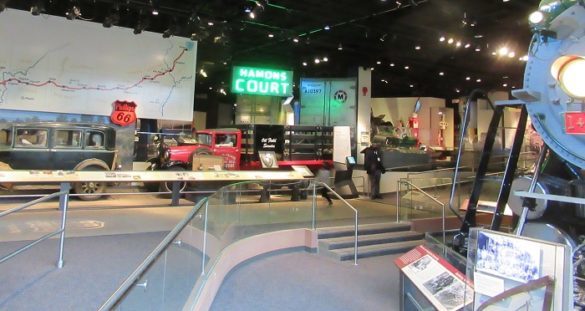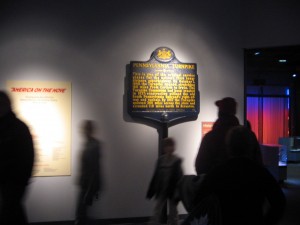by Bruce Wells | Jun 21, 2025 | Petroleum Art
National Museum of American History once featured oil derricks, pump jacks and other oilfield technologies.
The Smithsonian Institution’s “Hall of Petroleum” in Washington, D.C., opened in the summer of 1967 inside a museum wing devoted to the history of oilfield technology. The collection included cable-tool and rotary drilling rigs and many oilfield-related geology and engineering exhibits. (more…)
by Bruce Wells | Nov 14, 2024 | Petroleum Transportation
The Smithsonian Institution’s National Museum of American History has educated millions of visitors about the history of U.S. transportation since “America on the Move” opened in November 2003 on the National Mall in Washington, D.C.
Today’s first-floor exhibits in the General Motors Hall of Transportation include the 1903 Winton (the first automobile to drive across the country), bicycles, carriages, antique automobiles, and a 1959 Chicago Transit Authority “L” mass transit car. A 260-ton locomotive built in 1926 is featured near exhibits about the “People’s Highway,” U.S. Route 66.
“America on the Move” also displays a red, 1931 Ford truck representing a typical oilfield service company.

An exhibit about the history of Route 66 — commissioned in 1926 and fully paved by the late 1930s — is part of the Transportation Hall at the National Museum of American History. Photo by Bruce Wells.
The $22 million Transportation Hall encompasses 26,000 square feet and displays more than 340 historic objects. The space features 19 historic settings in chronological order reflecting the nation’s relationship with great and small roadways.

“America on the Move replaces exhibits of road and rail transportation and civil engineering installed when the National Museum of American History opened as the Museum of History and Technology in 1964,” notes the American on the Move website page.
“We would not do an exhibit about cars and trains, or even a transportation history exhibit. It would be an exhibit about transportation in American history,” the site adds.

Visitors to the Hall of Transportation learn how and why the U.S. interstate highway system began in the 1950s. Photo by Bruce Wells.
“America on the Move” features the Smithsonian’s extensive transportation collection using multimedia technology — and a large displays, including PS-4 class steam locomotive (No. 1401) built in 1926. The exhibition educates visitors about the history of U.S. transportation infrastructure, and “reveals America’s fascination with life on the road.” (more…)




